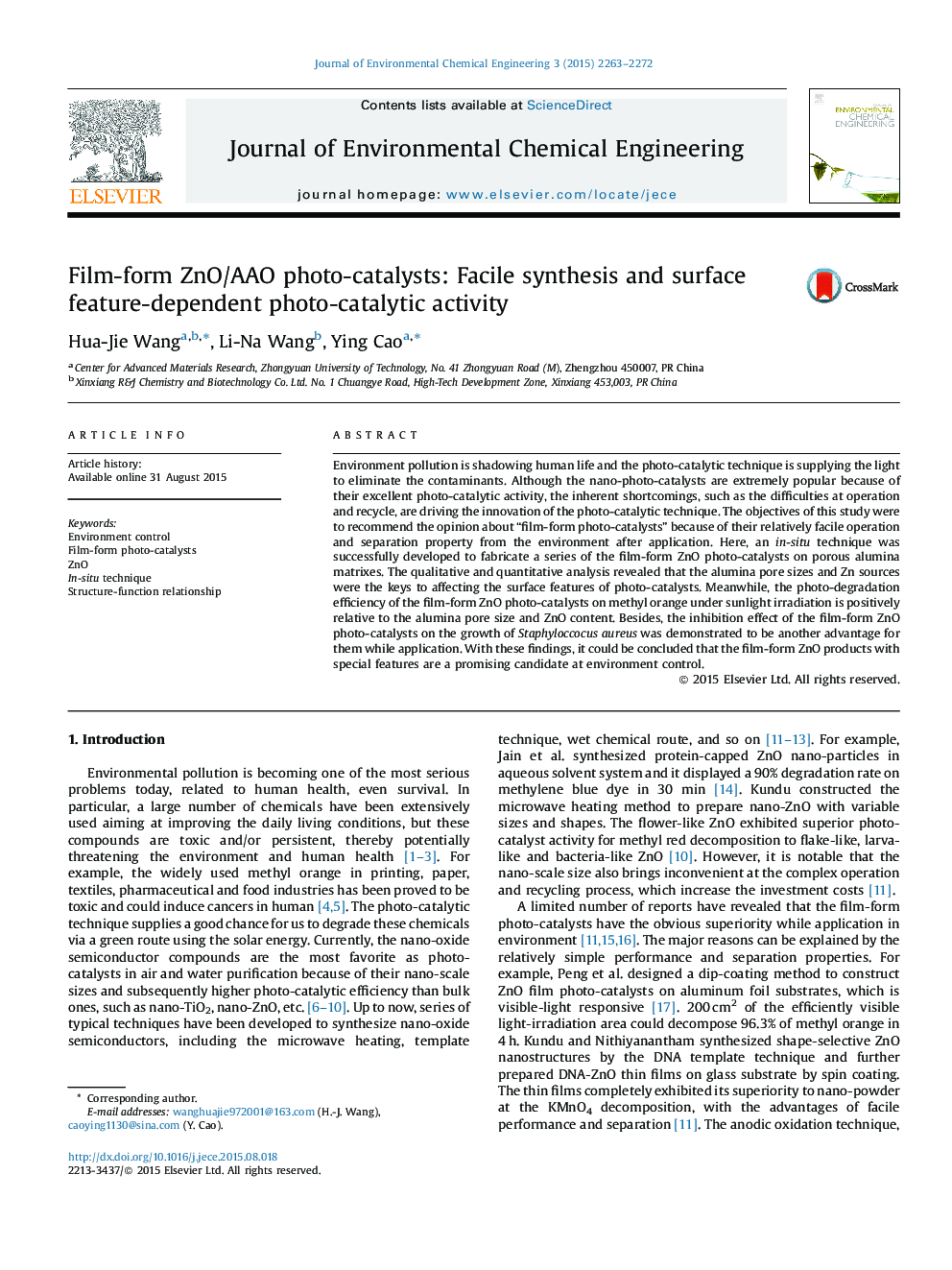| Article ID | Journal | Published Year | Pages | File Type |
|---|---|---|---|---|
| 222029 | Journal of Environmental Chemical Engineering | 2015 | 10 Pages |
•The in situ technique was developed to prepare the ZnO/AAO film.•Pore sizes and Zn sources were key factors affecting ZnO surface features.•Surface features of film-form ZnO affected their photo-catalytic activity.•ZnO films with special surface features had the potential as photo-catalysts.
Environment pollution is shadowing human life and the photo-catalytic technique is supplying the light to eliminate the contaminants. Although the nano-photo-catalysts are extremely popular because of their excellent photo-catalytic activity, the inherent shortcomings, such as the difficulties at operation and recycle, are driving the innovation of the photo-catalytic technique. The objectives of this study were to recommend the opinion about “film-form photo-catalysts” because of their relatively facile operation and separation property from the environment after application. Here, an in-situ technique was successfully developed to fabricate a series of the film-form ZnO photo-catalysts on porous alumina matrixes. The qualitative and quantitative analysis revealed that the alumina pore sizes and Zn sources were the keys to affecting the surface features of photo-catalysts. Meanwhile, the photo-degradation efficiency of the film-form ZnO photo-catalysts on methyl orange under sunlight irradiation is positively relative to the alumina pore size and ZnO content. Besides, the inhibition effect of the film-form ZnO photo-catalysts on the growth of Staphyloccocus aureus was demonstrated to be another advantage for them while application. With these findings, it could be concluded that the film-form ZnO products with special features are a promising candidate at environment control.
Graphical abstractFigure optionsDownload full-size imageDownload as PowerPoint slide
